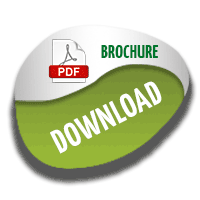
Anil Batta
MM Institute of Medical Sciences & Research, India
Title: Nanotechnology and its use in Imaging and Drug Delivery
Biography
Biography: Anil Batta
Abstract
Nanotechnology is the exploitation of the unique properties of materials at the nanoscale. Nanotechnology has gained popularity in several industries, as it offers better built and smarter products. The application of nanotechnology in medicine and healthcare is referred to as nanomedicine, and it has been used to combat some of the most common diseases, including cardiovascular diseases and cancer. The present review provides an overview of the recent advances of nanotechnology in the aspects of imaging and drug delivery. Nanoscience is the study of the unique properties of materials between 1-100 nm, and nanotechnology is the application of such research to create or modify novel objects. The ability to manipulate structures at the atomic scale allows for the creation of nanomaterials. Nanomaterials have unique optical, electrical and/or magnetic properties at the nanoscale, and these can be used in the fields of electronics and medicine, amongst other scenarios. Nanomaterials are unique as they provide a large surface area to volume ratio. Unlike other large-scaled engineered objects and systems, nanomaterials are governed by the laws of quantum mechanics instead of the classical laws of physics and chemistry. In short, nanotechnology is the engineering of useful objects and functional systems at the molecular or atomic scale.
Nanotechnologies have had a significant impact in almost all industries and areas of society as it offers i) better built, ii) safer and cleaner, iii) longer-lasting and iv) smarter products for medicine, communications, everyday life, agriculture and other industries. The use of nanomaterials in everyday products can be generally divided into two types. First, nanomaterials can be merged or added to a pre-existing product and improve the composite objects' overall performance by lending some of its unique properties. Otherwise, nanomaterials such as nanocrystals and nanoparticles can be used directly to create advanced and powerful devices attributed to their distinctive properties. The benefits of nanomaterials could potentially affect the future of nearly all industrial sectors. The beneficial use of nanomaterials can be found in sunscreens, cosmetics, sporting goods, tyres, electronics and several other everyday items . Additionally, nanotechnologies have revolutionized advances in medicine, specifically in diagnostic methods, imaging and drug delivery.

